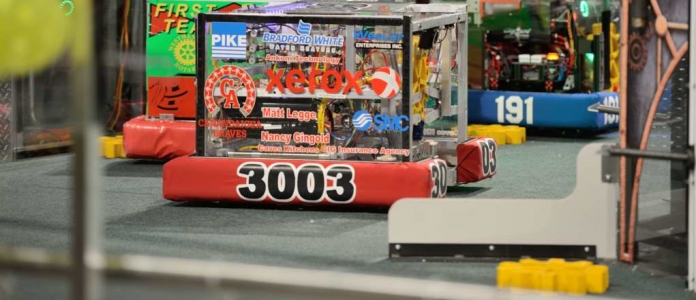By Jennifer Englert, senior cognitive engineer, Xerox Innovation Group
Just as my feet hit the floor in the morning, the 4-D kitchen printer hums as it uses organic ingredients to create a breakfast that suits both my taste requirements and my body’s current caloric and nutritional needs. I say “4-D printer” because I imagine these devices would incorporate things like smell taste and other experiential characteristics.
My personal, digital assistant produces a prioritized set of reminders for things I need to do today, and checks in with a few of my colleagues to coordinate where and when we might meet up later on. In the corner of my closet, another device is printing an outfit that suits the day’s activities and is optimized for my current body shape.
It’s 2050 and technology is no longer another thing to manage. Instead, it’s tailored to truly support my lifestyle and the decisions I need to make each day. This is a world where one’s digital and physical lives mingle seamlessly, 24/7.
Today our personal socio-technological networks are just beginning to form. Access to them involves quasi-connected computers and “smart” devices. These devices are clumsy. We have to keep track of them. We manually pull information from them, and they push data to us in an awkward way that often interferes with what we are trying to do. In the future, our network of devices and information will help track what’s important to us, instead of adding to the increasingly complex set of tasks we have to manage.

As technology advances during the next few decades, I imagine the “Internet” will transform into a web of interconnected personal support networks delivered through unobtrusive materials and “devices” designed to take advantage of my natural gestures and thought patterns. While they do not dictate my day, these networks will help me integrate all aspects of my life, supporting what I’m doing in each moment.
This web of networks will be connected to my environment, my goals and activities and the people who matter to me – so as I’m picking up my daughter from dance class, I receive an alert that a close friend happens to be nearby. Our personal digital assistants know we have a few minutes to spare, so with our blessing, they guide our vehicles to a coffee shop that they know we both like. On the way, we choose from menu items that fit our preferences and nutritional needs, and pay for our choices before we arrive.
When we get to the coffee shop, we can focus on catching up with each other, and laughing about the fact that our printed outfits are so similar. Are those closet printers psychic, or what?!
Xerox’s Jennifer Englert is a scientist with expertise in ethnography, the study of people – what they do, what tools they use, how they interact with others and how they think in the real-life, natural settings where these behaviors occur. Her work helps uncover peoples’ rationales, knowledge and unmet needs, helping Xerox identify opportunities for new products, services, practices and the benefits/risks associated with change.
Subscribe to Simplify Work and receive email updates when we publish a new article.
We Asked Xerox People
“Imagine it’s August 1, 2050. How is your day different than it is today?”
The vast majority of Xerox people indicated that in 36 years, they’ll be connected to technology more than half of the time – even though many mentioned they hope to retire well before 2050. One person noted, “I’ll be in my 80s….and just as active as I am today. I hope wearable technology keeps my medical professionals attuned to my health needs in real time, able to intercede before serious trouble arises.”
A mobile world will enable constant productivity. “We will not be chained to a desk. We will be completely mobile, conducting business and personal transactions while we are on the move; the distinction between personal and business time will become almost transparent. Transportation should be pretty well automated by this time, so that we can devote all travel time to business transactions if we desire.”
Despite the idea that technology would be all around – some even questioned whether it would be possible to “survive the day without Internet” – many mentioned a new kind of freedom. “I’d have quality time for myself, my family and all those dear to me but at the same time remaining productive as everything will be on the go.” Personal relationships and “face to face time will never go out of style.”
But what will power all this amazing technology? Many pointed to renewable resources like wind and solar; “By 2050, there would be no conventional fuel left.” Others had inventive solutions: “I will be living in a colony under the Atlantic ocean in a dome that generates its own energy through sea motion and farms resources available in the ocean.”
While Jennifer Englert doesn’t necessarily see us 20,000 Leagues Under the Sea, she does have some other high tech ideas about life in 2050.
From a Survey of Xerox People:
By 2050, how much of your day will you spend connected to Internet-based services by devices, wearables, and other technology?





The 4th dimension is time, so you’re not going to get a 4D printer. Though you will likely to have a device that is like a replicator from Star Trek.
I see that Jennifer defines the 4th dimension as smell and taste. Now I understand why the Homer Simpson moment is so powerful. Mmmmmmmmmm, doughnuts!